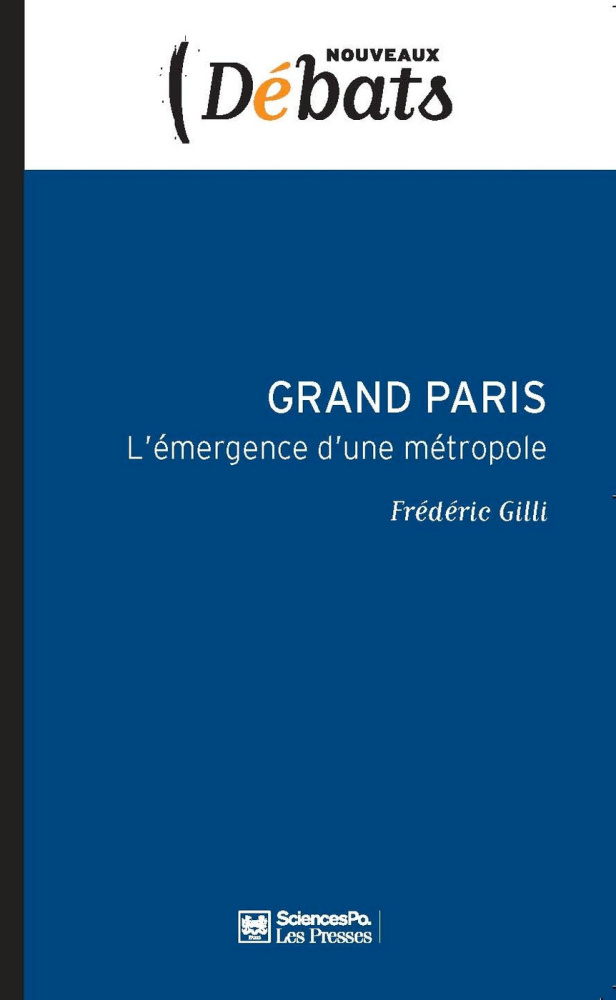Grand Paris
L'émergence d'une métropole
First Edition
What if the suburbs are the future of Paris?
During the past ten years, a new vision of the greater metropolitan area of Paris has unobtrusively emerged. The hierarchical model of an Île de France region centred on the twenty inner arrondissements, administered by the State and governing all of France has given way to a self-organising metropolis wherein significant economic and cultural contrasts have surfaced and multi-lateral networks have been established on the European and global scale.
Neither Paris nor the central State have disappeared, but the suburbs have demonstrated that SME (small and medium enterprises) in the Île de France region are gaining independence, while an increasingly young and diverse population is becoming the norm. Although much remains to be done in the realm of transport, housing and inequality, the Greater Paris Project, as inaugurated in December 2013, proposes a more efficient and equitable form of governance which remains fully democratic.
An indispensable work for anyone wishing to understand this shift, comprehend upcoming changes in Île de France and discover how France has entered the 21st century.
Frédéric Gilli is a researcher with Sciences Po, the managing director of the Campana Eleb Sablic Agency and a co-editor of the journal Métropolitiques.
Specifications
- Publisher
- Presses de Sciences Po
- Author
- Frédéric Gilli,
- Collection
- Nouveaux Débats
- Language
- French
- Publisher Category
- > Political Science > Governance
- Publisher Category
- > Fields > Governance
- Publisher Category
- > Politics
- Publisher Category
- > Society
- BISAC Subject Heading
- POL000000 POLITICAL SCIENCE
- Onix Audience Codes
- 01 General / trade
- CLIL (Version 2013-2019)
- 3283 SCIENCES POLITIQUES
- Credit
- Presses de Sciences Po
- Title First Published
- 20 February 2014
- Subject Scheme Identifier Code
- Thema subject category: Politics and government
- Type of Work
- Monograph
- Includes
- Bibliography
Paperback
- Publication Date
- 20 February 2014
- ISBN-13
- 978-2-7246-1516-6
- Extent
- Main content page count : 322
- Code
- 9782724615166
- Dimensions
- 11 x 18 x 2.5 cm
- Weight
- 262 grams
- List Price
- 15.00 €
- ONIX XML
- Version 2.1, Version 3
ePub
- Publication Date
- 15 March 2014
- ISBN-13
- 978-2-7246-1517-3
- Product Content
- Text (eye-readable)
- Extent
- Main content page count : 322
- Code
- 9782724615173
- Technical Protection ebook
- Adobe DRM
- List Price
- 9.99 €
- ONIX XML
- Version 2.1, Version 3
Google Book Preview
Contents
Introduction
Un modèle en question
Un enjeu historique pour Paris
Une décennie de mutations
Première partie LE GRAND PARIS : UNE MÉTROPOLE RAYONNANTE ?
Chapitre 1 UNE RÉGION CAPITALE : ÉTAT DES LIEUX EN 2000
Une mutation industrielle réussie, un défi économique et social
Une région riche pleine de pauvres ?
Chapitre 2 LA PEUR DU DÉCROCHAGE : 2003-2008
Paris s'endort-il ?
Une place prépondérante dans l’économie française
Métropole européenne ou capitale mondiale ?
Le modèle régional en question
Chapitre 3 LES TERRITOIRES DU GRAND PARIS : 2008-2013
Une métropole fragilisée par la crise
Un modèle économique national bouleversé
Paris dans un système-monde en pleine mutation
Le Grand Paris, du campus à la métropole
Une métropole rebranchée sur ses territoires
Conclusion de la première partie FAIRE VIVRE L'UNITÉ ET LA DIVERSITÉ DE LA MÉTROPOLE
Deuxième partie LA PRIVATISATION DE LA MÉTROPOLE ?
Chapitre 4 UN TOURNANT : 1997-2003
La région Île-de-France en 1997 : le résultat d’un projet d’urbanisme
La fin de l’âge d’or des politiques d’aménagement ?
Chapitre 5 UNE RÉGION QUI SE CHERCHE : 2003-2008
Un modèle d’aménagement à repenser
Un aménagement opérationnel en panne
Chapitre 6 CONTROVERSES AUTOUR DU GRAND PARIS : ÉTAT DES LIEUX EN 2000
Les urgences s’aggravent
Région, région capitale ou... métropole
Aménager le Grand Paris : questions d’outils et d’approche
Le grand pari étatique des champions nationaux
Qui finance quoi, et comment ?
Des investissements aux retombées insaisissables
Quelle place pour l’État et la puissance publique ?
Chapitre 7 TIMIDES RELANCE ET REPRISE EN MAIN : 2010-2013
De grands engagements qui s’installent dans le temps
L’affirmation des élus locaux
Premières transformations du paysage métropolitain
Une mobilisation des citoyens et des acteurs locaux : la métropole bottom-up ?
Un nouveau système doit s’organiser
Conclusion de la deuxième partie VERS UNE MÉTROPOLE DURABLE ?
Troisième partie UN ENJEU DÉMOCRATIQUE : LA MÉTROPOLE POUR QUI ?
Chapitre 8 UN SYSTÈME POLITIQUE BLOQUÉ : 2001
Une capitale avant d’être une ville
Décentralisation et déconcentration, un mariage difficile
Une ville coupée de sa banlieue
Chapitre 9 UNE LENTE OUVERTURE MÉTROPOLITAINE : 2001-2008
Paris-banlieues : le temps de la (re)découverte
Sous les cités, les discriminations
Une sécession des classes moyennes ?
Mythes et mystifications autour de « Boboland »
Une crise politique et démocratique
Les débats sur le modèle de gouvernance
Chapitre 10 LE TEMPS DU GRAND PARIS : 2008-2012
Avis de tempête
Une amorce de société locale dans la métropole
Chapitre 11 ATTERRISSAGE DÉLICAT : 2013
Le Grand Paris : un enjeu politique et citoyen
Une bataille institutionnelle et politique
Une loi métropolitaine
Négocier sa place pour exister dans le Grand Paris
Concrétiser un processus sans le figer : ruptures et continuités
Conclusion de la troisième partie CONSTRUIRE LAMÉTROPOLE : POUR QUI ET AVEC QUI ?
Conclusion générale
Un processus entre ruptures et continuités
Une métropole durable ?
La revanche de la banlieue ?
Un modèle de société métropolitaine
Bibliographie sélective
Sur le Grand Paris
Sur la ville et l’organisation des territoires

